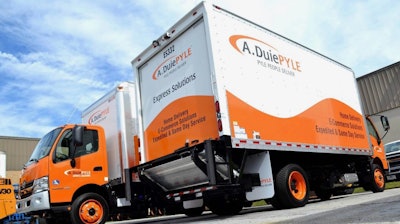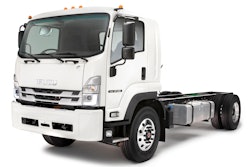
Global supply chains weren’t exactly humming along before the COVID-19 pandemic, but the supply and demand issues of the past year have “revealed how fragile supply chains can be,” wrote the authors of a February 2021 Deloitte Insights report titled “Creating a competitive supply chain advantage through connected communities.”
Deloitte is one of the world’s largest accounting and professional services firms.
The pandemic has also created new opportunities for transportation and logistics providers to gain an edge through connectivity, according to the report, based on an online survey that Deloitte commissioned that gathered responses in early 2020 from 182 supply chain leaders in trucking, ocean, rail, manufacturing and retail.
One of the biggest hurdles and opportunities in the supply chain is fragmentation. The trucking market has “small players and tighter IT budgets,” the authors noted, and 90% of the 470,000 US trucking carriers (about two-thirds of total trucking capacity) are operating fleets of six or fewer trucks.
A number of technology companies have built digital freight exchanges to fill the gaps caused by market fragmentation. The platforms connect capacity to cargo and generally target the spot trucking market.
Digital exchanges have 48% participation in trucking, according to the report, “but still have a long way to go.” Deloitte recommends consolidation of exchanges to improve the digital freight landscape. It will take more than digital exchanges and data sharing for supply chains to return to normal, however.
Forging partnerships, expanding services
The COVID-19 pandemic has disrupted the equation for lean supply chains that shippers have been trying to solve for the past decade, explained Andy Moul, director of warehousing and distribution solutions for A. Duie Pyle (Pyle).
Everyone is re-evaluating concepts like safety stock, just-in-time deliveries and normal transit times. “All those things have changed,” he said.
On a positive note, COVID-19 has caused shippers to reconnect with transportation and logistics providers, which has “gotten us, in many cases, back to that true partnership," he said, "because overnight those solutions went from commercial offerings that had a price to being critically important partnerships."
One area where motor carriers and third-party logistics (3PL) providers have found opportunities is blended warehousing and delivery services that smooth the fulfillment of service-sensitive goods.
Pyle, headquartered in West Chester, Pennsylvania, is an asset-based 3PL with 1,500 trucks and a specialty in service-sensitive B2B freight in the Northeast along the I-95 corridor from Baltimore to Bangor, Maine.
The company’s infrastructure gives shippers forward inventory positions along with same- and next-day fulfillment from Integrated Service Centers. At these facilities Pyle combines warehousing with distribution and final-mile delivery services.
Even before COVID-19, Pyle had seen a surge of customers, especially industrial suppliers, asking for same-day order fulfillment with deliveries to their own facilities and end customers.
In most cases, “same-day” fulfillment means overnight or next-day delivery, which allows shippers to receive orders from customers through the evening, he explained.
In some instances, Pyle’s overnight deliveries are unattended. An industrial supplier may need product delivered inside a retail store, in a defined area, and gives Pyle security clearance for drivers to enter and exit.
Pyle manages the full supply chain for some customers that use the same-day fulfillment service, which starts by transporting bulk truckload and LTL shipments to its warehouses from distribution centers (DCs) and directly from manufacturers.
When B2B orders come in, Pyle handles the final-mile delivery from 74 service centers to its customers' storefront locations or directly to their end customers using a fleet of 1,077 tractor-trailers, box trucks and Express Solution straight trucks. The straight trucks have lift gates with a 2,500-pound payload capacity.
Over the last three to five years, Moul has seen an increase in freight that requires smaller delivery units for the ease of moving through congested traffic and urban locations.
The smaller vehicles are most helpful when the company is asked to separate B2B shipments into residential B2C deliveries. For example, Pyle can make deliveries overnight to HVAC contractors and drop off freight at a shop, home garage, and even directly inside a work truck.
Contractors save time and can increase revenue from the overnight deliveries. With supplies on hand, contractors are able to set their first work appointment at 7:30 a.m., for example, instead of 9 a.m. after making a trip to the store.
The disruption caused by COVID-19 “really exposed how important it is to have a supply chain that is agile, and that can respond as the need changes,” Moul said.










